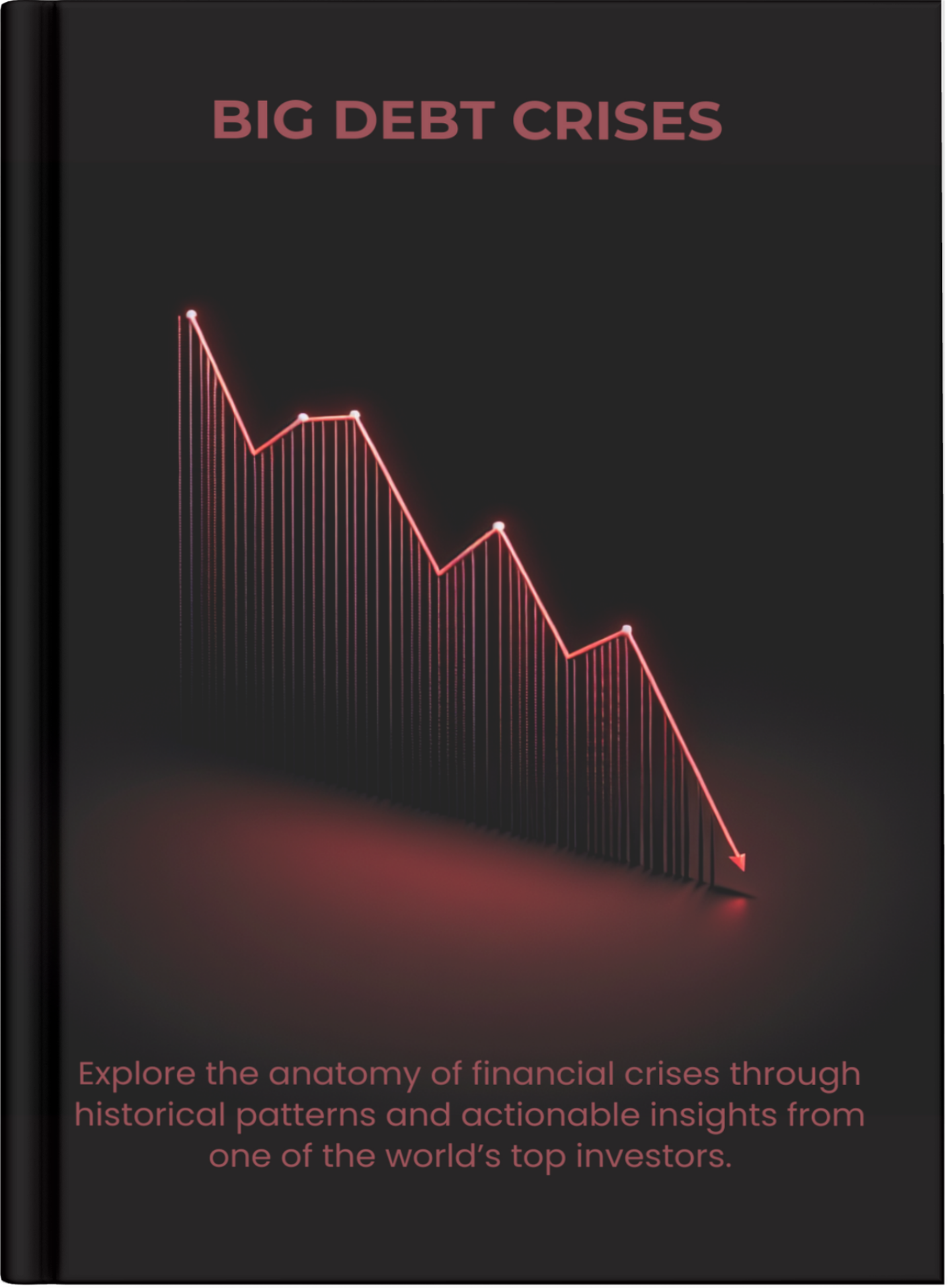
Big Debt Crises
Ray Dalio
In 'Big Debt Crises,' Ray Dalio provides a comprehensive analysis of the mechanics of debt cycles and the economic crises they can trigger. Drawing from historical examples, Dalio outlines the patterns and principles that govern debt crises, offering insights into how they can be managed and mitigated. The book is divided into three parts: a theoretical framework, historical case studies, and practical principles for dealing with debt crises.
0:000:00
Keypoint 1: Understanding Debt Cycles
Debt cycles are fundamental to understanding economic fluctuations and crises. They are the result of the accumulation and repayment of debt over time, which can lead to periods of economic expansion and contraction. In the context of debt cycles, it is crucial to distinguish between short-term and long-term cycles, as each has distinct characteristics and implications for the economy.
Short-term debt cycles, often referred to as business cycles, typically last 5 to 8 years. These cycles are driven by the availability of credit and the interest rate policies of central banks. During the expansion phase, credit is easily accessible, interest rates are low, and economic activity is robust. This leads to increased spending and investment, which fuels economic growth. However, as the cycle progresses, inflationary pressures may build, prompting central banks to raise interest rates to cool down the economy. This tightening of credit conditions can lead to a slowdown in economic activity, marking the contraction phase of the cycle.
Long-term debt cycles, on the other hand, span several decades and are characterized by the accumulation of significant levels of debt relative to income. These cycles are less frequent but have more profound impacts on the economy. In the early stages of a long-term debt cycle, borrowing increases as confidence in economic growth rises. Over time, however, the debt burden becomes unsustainable, leading to a deleveraging process where debt is reduced through defaults, restructurings, or inflation. This deleveraging can result in prolonged periods of economic stagnation or recession.
Understanding these cycles is essential for policymakers, investors, and businesses as they navigate economic environments. By recognizing the signs of different phases within these cycles, stakeholders can make informed decisions to mitigate risks and capitalize on opportunities. For instance, during the expansion phase of a short-term cycle, businesses might invest in growth, while during the contraction phase, they might focus on cost-cutting and efficiency improvements. Similarly, recognizing the peak of a long-term debt cycle can prompt policymakers to implement measures that prevent excessive borrowing and promote sustainable economic growth.
Short-term debt cycles, often referred to as business cycles, typically last 5 to 8 years. These cycles are driven by the availability of credit and the interest rate policies of central banks. During the expansion phase, credit is easily accessible, interest rates are low, and economic activity is robust. This leads to increased spending and investment, which fuels economic growth. However, as the cycle progresses, inflationary pressures may build, prompting central banks to raise interest rates to cool down the economy. This tightening of credit conditions can lead to a slowdown in economic activity, marking the contraction phase of the cycle.
Long-term debt cycles, on the other hand, span several decades and are characterized by the accumulation of significant levels of debt relative to income. These cycles are less frequent but have more profound impacts on the economy. In the early stages of a long-term debt cycle, borrowing increases as confidence in economic growth rises. Over time, however, the debt burden becomes unsustainable, leading to a deleveraging process where debt is reduced through defaults, restructurings, or inflation. This deleveraging can result in prolonged periods of economic stagnation or recession.
Understanding these cycles is essential for policymakers, investors, and businesses as they navigate economic environments. By recognizing the signs of different phases within these cycles, stakeholders can make informed decisions to mitigate risks and capitalize on opportunities. For instance, during the expansion phase of a short-term cycle, businesses might invest in growth, while during the contraction phase, they might focus on cost-cutting and efficiency improvements. Similarly, recognizing the peak of a long-term debt cycle can prompt policymakers to implement measures that prevent excessive borrowing and promote sustainable economic growth.

